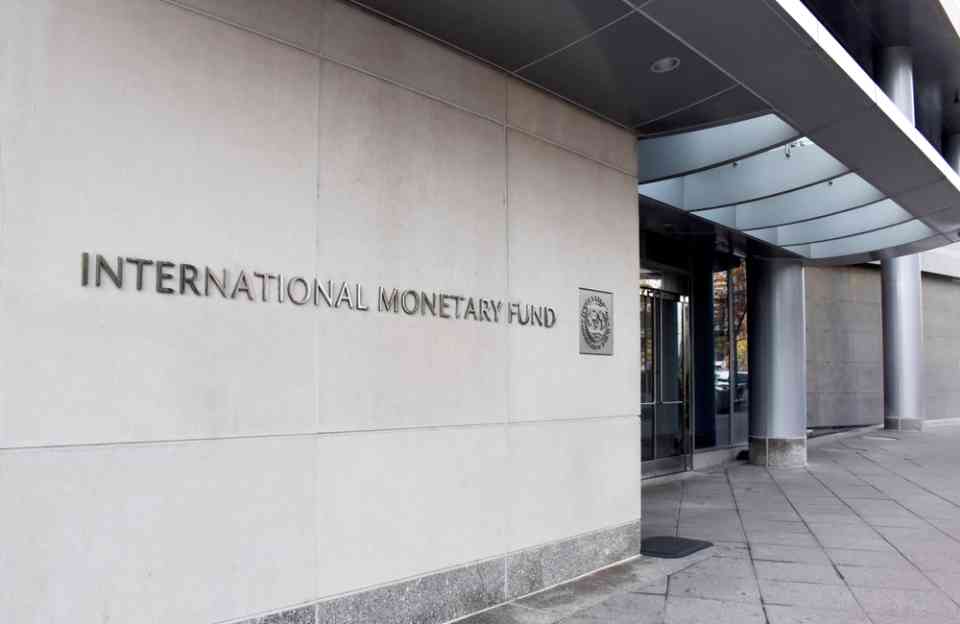IMF Warns of Overcapacity in China’s Manufacturing Sector

The International Monetary Fund (IMF) has raised concerns about China’s manufacturing sector, highlighting issues of overcapacity despite a generally improved economic outlook.
China last faced significant overcapacity in 2014-2016, following extensive stimulus packages introduced by Beijing and local governments during the 2008-2009 Global Financial Crisis. This overcapacity was particularly evident in heavy industries such as iron, steel, and aluminum.
In recent years, the problem has resurfaced due to imbalances in supply and demand, exacerbated by the COVID-19 pandemic. Post-pandemic stimulus efforts have not spurred a sustained revival in domestic demand, compounded by challenges in the property sector.
Chinese companies are now producing far more than domestic consumption can absorb, resulting in surpluses and low factory utilization rates in industries like machinery, food, textiles, chemicals, and pharmaceuticals. The downturn in the property sector has also reduced demand for downstream products such as furniture, iron and steel products, plastics, and non-metallic minerals.
Emerging industries, including electric vehicles (EVs) and clean technology, have also contributed to domestic surpluses. For instance, capacity utilization rates for silicon wafers dropped from 78% in 2019 to 57% in 2022. Similarly, China’s production of lithium-ion batteries in 2022 was 1.9 times the volume of domestically installed batteries. Reports indicate that China’s exports of solar cells in 2023 were five times higher than in 2018 and 40% above 2022 levels. In 2023, China’s EV exports were seven times greater than in 2019 and 1.7 times larger on an annual basis.
Protectionist measures against Chinese goods, typically seen in advanced economies, are now spreading to some Asian countries. The United States has increased tariffs on strategic sectors such as steel, aluminum, semiconductors, batteries, and solar cells, citing China’s unfair trade practices. The European Commission has imposed provisional duties on Chinese electric cars to counteract what it views as unfair subsidies.
The influx of Chinese goods is also affecting ASEAN trading partners. For example, the Federation of Thai Small and Medium Enterprises has urged the Commerce Ministry to review import tax rates and impose a value-added tax on Chinese products to protect local manufacturers. Indonesia plans to implement import tariffs ranging from 100% to 200% on Chinese goods to mitigate the impact of the US-China trade war. Malaysian SMEs have voiced concerns about Chinese businesses impacting sectors like low-value and tech goods, retail, trading services, and construction.
China has been Malaysia’s largest trading partner since 2009. However, Malaysia has experienced a growing trade deficit with China, which expanded more than twentyfold from RM3.1 billion in 2012 to RM66.4 billion in 2023. Although Malaysia’s exports to China grew by 6.1% annually from 2011 to 2023, imports from China increased by 8.3% per year, leading to a significant import share expansion from 13.2% in 2011 to 21.3% in 2023.
China’s investments in Malaysia’s manufacturing sector amounted to RM74.2 billion as of December 2023, with Chinese enterprises active in various sectors such as manufacturing, IT, construction, and food services. The impact of these investments on local businesses, particularly SMEs, has been a contentious issue, with debates on whether the benefits outweigh the competition challenges.
Despite these challenges, China’s investments have provided employment, technology transfer, and infrastructure development benefits. However, concerns persist regarding the net impact on domestic industries, particularly in low-tech and low-priced consumer goods via eCommerce platforms.
To address the impact of China’s overcapacity and domestic surpluses, several policy options are suggested:
- Trade Defense Instruments: Implementing tariff barriers on Chinese products, although this could lead to retaliation and is not in line with free trade practices under agreements like the ASEAN-China Free Trade Agreement and the Regional Comprehensive Economic Partnership.
- Local Content Requirements (LCRs): Promoting domestic industry and employment through mandatory measures that enforce the use of domestic products.
- Balancing Economic and Geopolitical Priorities: Policymakers need to balance the need for high-tech investments from China while discouraging involvement in low-tech industries that domestic SMEs can handle.
- Negative List for Foreign Investments: Reviewing and potentially restricting certain industries for foreign investments, including setting limits on foreign firms’ ability to sell goods in the domestic market.
- Import Substitution Policies: Reducing reliance on Chinese imports through fiscal incentives and promoting domestically produced goods.
- Smart Partnerships: Encouraging cooperative ventures between domestic and Chinese enterprises to ensure mutually beneficial outcomes.
Lee Heng Guie, Executive Director of the Socio-Economic Research Centre, emphasizes the importance of strategic policymaking in navigating the complexities of China’s economic influence while fostering domestic growth and resilience.
| GDP (nominal) | Capital | Head of State | Head of Government | GDP (nominal) per capita | GDP (PPP) | GDP (PPP) | GDP (PPP) per capita |
|---|---|---|---|---|---|---|---|
| China | Beijing | Xi Jinping | Li Qiang | 17.700.899 | 12.541 | 35.004.000 | 23.309 |
Have you read?
Countries Most in Debt to the International Monetary Fund (IMF).
Most Successful Unicorn Startups.
$100 Billion Club: Richest People With The 12-Figure Fortunes.
Largest electricity consumers in the world, by country (in terawatt-hours).
Countries that Export the Most Goods and Services.
Bring the best of the CEOWORLD magazine's global journalism to audiences in the United States and around the world. - Add CEOWORLD magazine to your Google News feed.
Follow CEOWORLD magazine headlines on: Google News, LinkedIn, Twitter, and Facebook.
Copyright 2025 The CEOWORLD magazine. All rights reserved. This material (and any extract from it) must not be copied, redistributed or placed on any website, without CEOWORLD magazine' prior written consent. For media queries, please contact: info@ceoworld.biz








